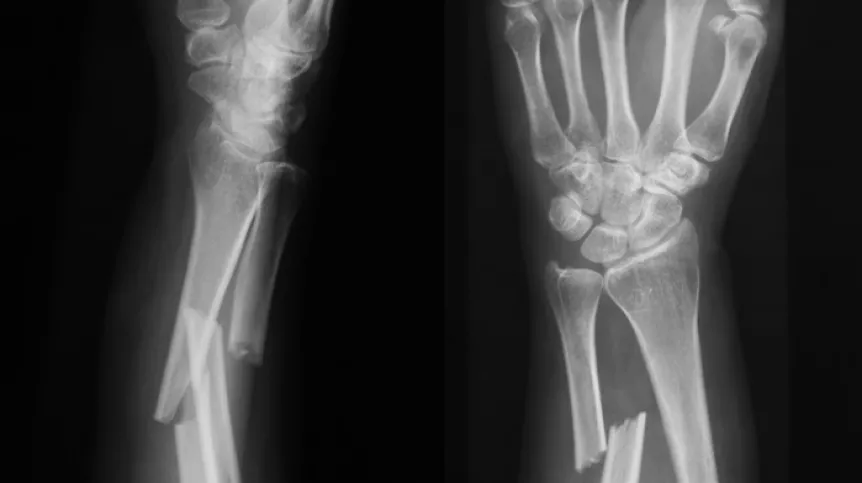
A Polish scientist is working on a nanofibre biomaterial that can be injected directly into the fracture site. Ultimately, it will help patients whose bones heal too slowly or when this process is hampered by problems related to osteoporosis, among other things.
Dr. Łukasz Szymański from the Institute of Genetics and Animal Biotechnology at the Polish Academy of Sciences is working on nanostructured polymer scaffolds to support bone regeneration. The scientist is a winner of the Polish National Centre for Research and Development LIDER competition; his team project will receive the maximum possible funding - PLN 1.8 million.
Dr. Szymański tells PAP - Science in Poland that bone substitutes made of a newly developed biomaterial will be placed in the fracture gap with a syringe. The biomaterial will increase cellular and molecular activity, facilitating the transport of nutrients in the tissue. The semi-liquid form of the biomaterial will allow it to remain at the implantation site.
MEALS FOR REGENERATING BONE
As part of the scientific project, researchers are making environmentally friendly scaffolds from nanofibres. The process of their creation involves electrospinning. The scaffolds contain selected peptides. They stimulate bone growth and regeneration, helping to build new tissue. They also contain amino acids that help in the bone healing process through the production of collagen. Excipients are released when the biomaterial is exposed to electromagnetic radiation. Additionally, silver nanoparticles are attached to the surface of the nanofibres to prevent the growth of bacteria and support the formation of blood vessels.
Listing the four main advantages of the material, Dr. Szymański says: ’First of all, it will transmit special signals that will help stem cells move and inhabit the fracture site. The nanofibres in the material will create pores through which it will be easier for nutrients to penetrate. The biomaterial will work to stimulate the bone healing process. Moreover, it is to be easy to use, which will facilitate the work of orthopedists, surgeons and medical staff.’
EFFECTIVE TREATMENT OF FRACTURES
The project leader emphasizes that current methods of treating fractures are expensive and time-consuming. In the most difficult cases of delayed fusion, the following methods are used: bone grafts, scaffold implantation, and injection of substances that stimulate the growth of bone tissue. These procedures often require surgery, which carries the risk of complications such as bleeding and infection.
Stem cell therapy is under development and - according to Dr. Szymański - the new biomaterial may contribute to the creation of new methods of delivering such cells to the fracture site. It can also bring numerous benefits in the field of maxillofacial surgery and dentistry.
The material is intended to meet the needs of people whose bones heal too slowly or do not heal at all. Problems with delayed bone fusion affect 5-10 percent of people with injuries, especially fractures of the femur and tibia resulting, for example, from car accidents. The age of the patient is associated with risk - the older the patient, the greater the risk of complications when treating fractures, especially in people with osteoporosis. Among younger patients, bone fractures most often result from sports injuries, falls from heights, and, increasingly problematic for health care systems around the world, traffic accidents.
PAP - Science in Poland, Karolina Duszczyk
kol/ zan/ kap/
tr. RL













